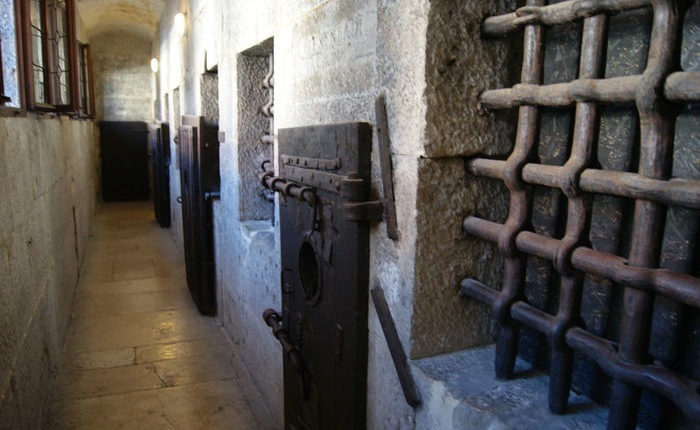What stories lie behind the most fearsome prisons in the history of Venice?
What are the origins of the terrifying Pozzi and Piombi?
Around 1530 the entire Palazzo Ducale di Venezia was completely reorganized. An entire wing of the building was reserved for the administration of justice, and gathered the courts, the offices of the judicial administration and the two prisons: the so-called Pozzi – located on the ground floor – and the Piombi, obtained from three large rooms located in the attic. Both were controlled by the Council of Ten, the supreme governing body, which operated in the city since the beginning of the fourteenth century.
The Pozzi and Piombi: Buried alive in the Pozzi
The Pozzi and the Piombi owe their names to the architecture of which they were built: the first were a set of very small cells, with only one plank like a bed, a shelf and the slop bucket. The light was almost non-existent day and night. The ceilings of the cells were so low as to prevent the upright posture to the prisoners, and the isolation was total. Here the conditions of life were frightful, and the terrible miasmas also reached the passers-by outside the building.
These ‘burials’, as the Venetian authorities defined them, were, together with the tortures, the cause of madness and death for the poor wretches who were locked up. The only comfort for prisoners and guards was the temperature that remained constant, a consequence of the thermal insulation of the rooms, lined with wood and almost without ventilation. I admit that they have always terrified me a lot!
the Pozzi and Piombi: Piombi, the prisons for privileged
Compared to the Pozzi, the Piombi – whose name derives from the metal used to cover the roof – appear as almost human places of imprisonment. They were destined for prisoners awaiting trial or belonging to high social classes who were granted a certain benevolence. Unlike the Pozzi, here it seems that the conditions of life were acceptable and that a certain freedom of contact with the outside world was allowed, which reached the possibility of having personal goods delivered. However, these were sixteenth-century prisons in which the ferocity of the place joined with that of the judicial system: almost always neither the reason for the arrest, nor the duration of the sentence were communicated to the prisoner.
The Pozzi and Piombi were later joined by the New Prisons, which the prisoners reached by crossing the Bridge of Sighs, so called because they sighed thinking of the lost freedom.
What do you think, have we terrified you enough?




